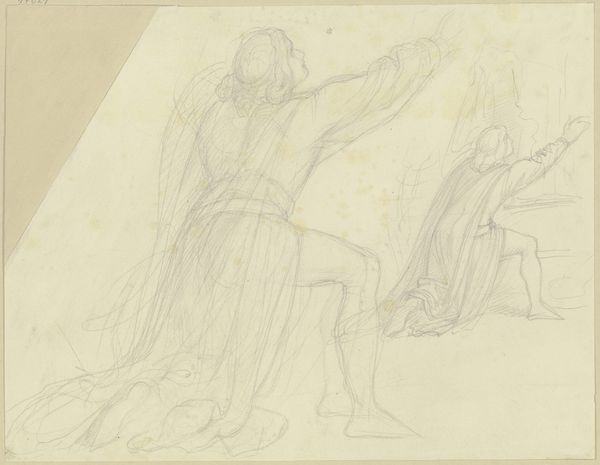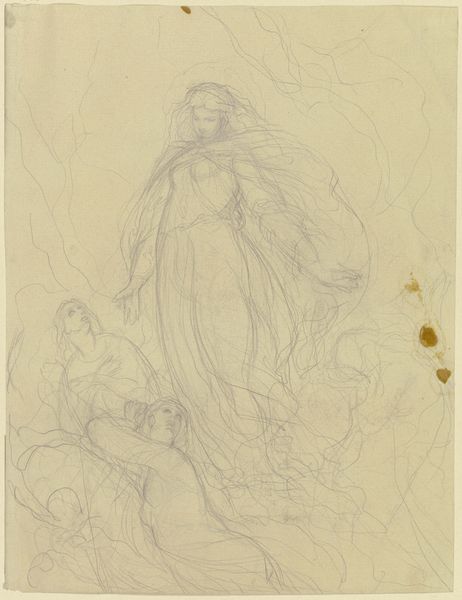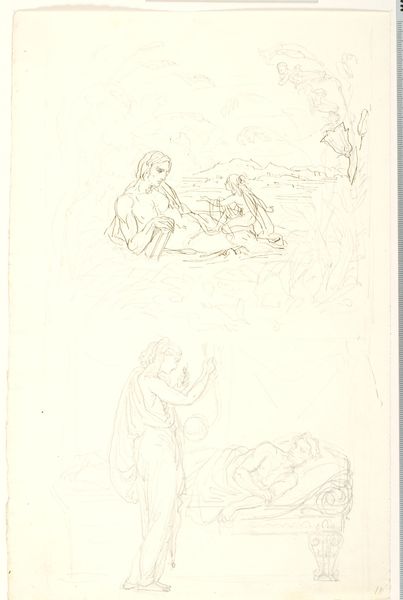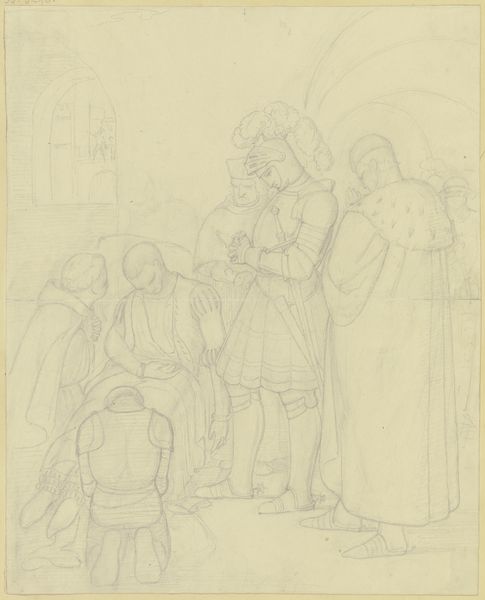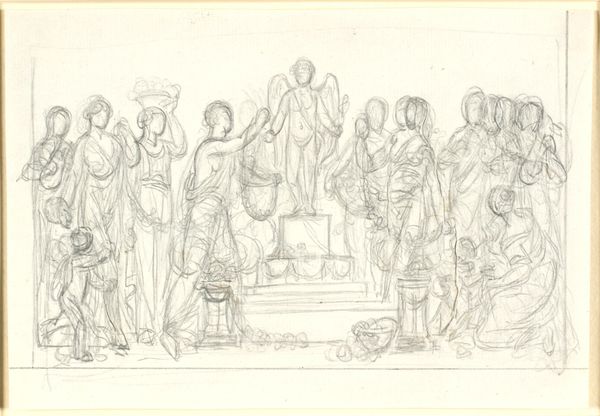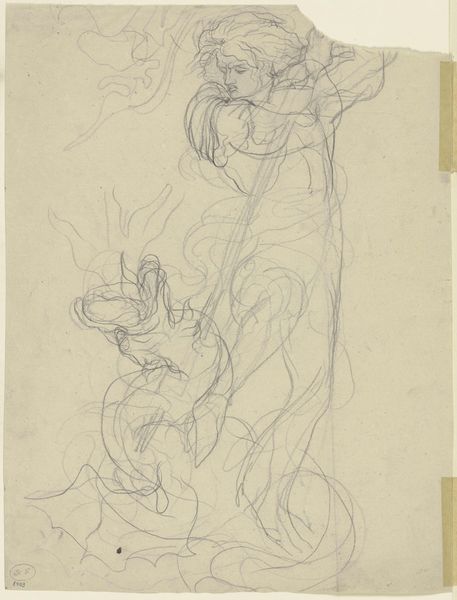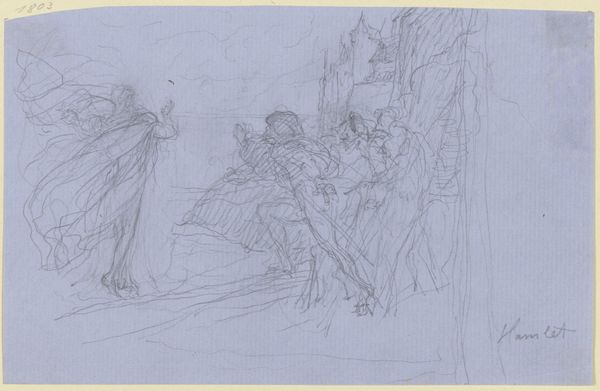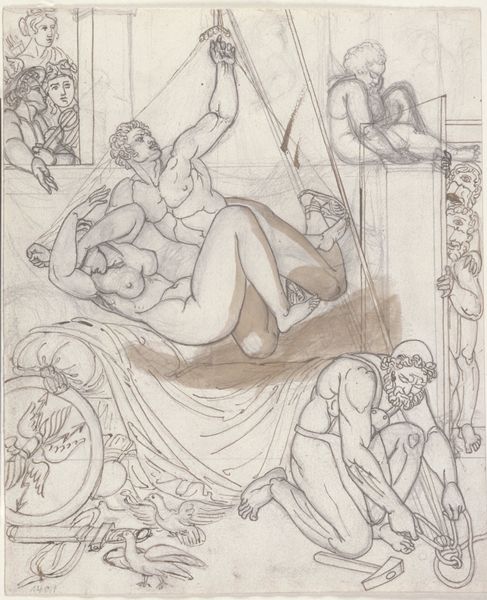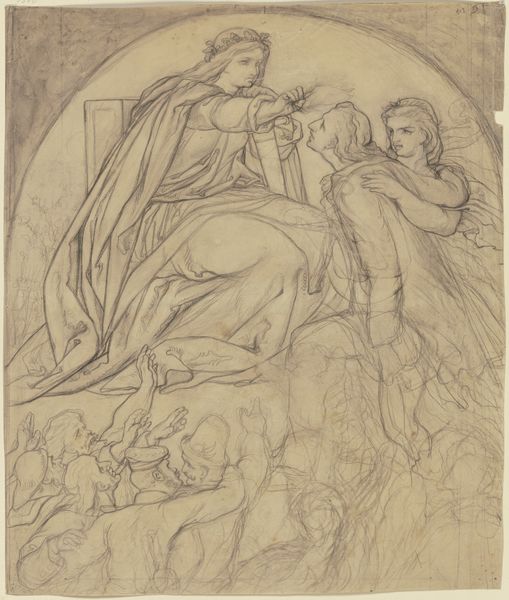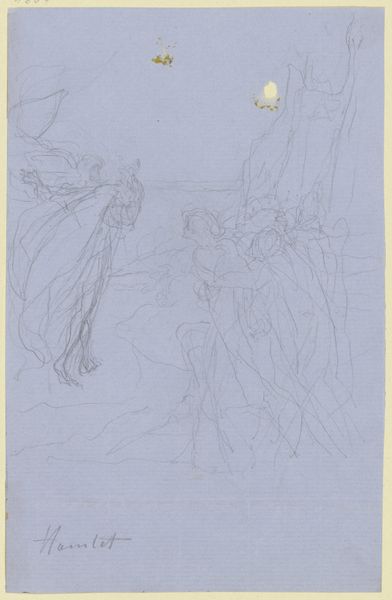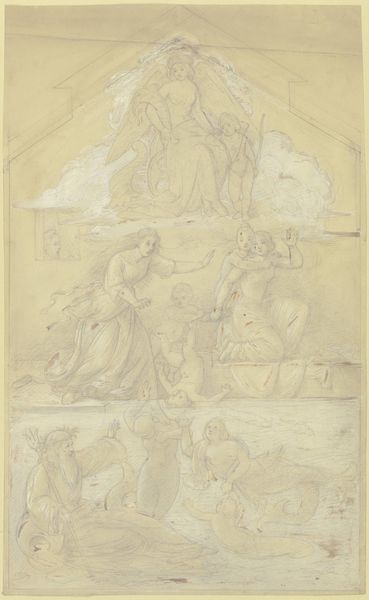
Joseph mit dem Jesuskind auf dem Arm, von musizierenden und ihn krönenden Engeln umgeben, unten König David und Abraham mit Isaak
0:00
0:00
drawing, paper, pencil
#
drawing
#
figuration
#
paper
#
pencil
#
history-painting
#
academic-art
Copyright: Public Domain
Curator: This is a drawing by Leopold Kupelwieser titled "Joseph mit dem Jesuskind auf dem Arm, von musizierenden und ihn krönenden Engeln umgeben, unten König David und Abraham mit Isaak" currently held in the Städel Museum. Editor: It feels incomplete, like a sketch waiting for its final form. There's a ghostly quality to the figures, all rendered in what appears to be a pale pencil. I am very much struck by the material choices. Curator: Well, considering that this piece lacks color and is rendered solely with pencil on paper, how does this choice influence the work’s message about the sacredness of its central figures and the context of religious art more broadly? The starkness, don't you think, removes certain worldly associations and keeps it elevated. Editor: Precisely! The lack of opulent materials like gold leaf, commonly associated with religious art commissions for wealthy patrons or churches, indicates something quite different about the intention behind this piece. It perhaps prioritizes the foundational aspects of religious belief rather than its external display. Think of a bare altar. Curator: It may suggest Kupelwieser focused on accessibility, creating images reproducible through prints, potentially widening viewership beyond elite circles. It also raises questions about who this piece was made for and how its imagery might influence the reception of religious themes. Editor: Good point! And speaking of reception, the distribution of this piece – was it commissioned, sold, gifted, widely disseminated, or hoarded within specific networks – could offer vital information about art consumption patterns. Curator: Right, the imagery chosen tells a certain kind of theological narrative – this emphasis on Joseph. We typically see Mary with Jesus but Joseph takes a leading paternal role here. Perhaps this suggests broader trends in religious thought at the time, with a rising social importance to ideas around family, and fathers specifically? Editor: Fascinating point. The act of choosing those specific historical and religious figures, rendered accessible through simple means of production, tells a complex story about visual strategies, dissemination networks, and belief systems in a transforming society. It transcends being 'merely' a drawing and becomes a window into art's larger social life. Curator: Precisely. Seeing past just the immediately visible unlocks an interesting understanding of 19th century Austrian art’s public roles.
Comments
No comments
Be the first to comment and join the conversation on the ultimate creative platform.
